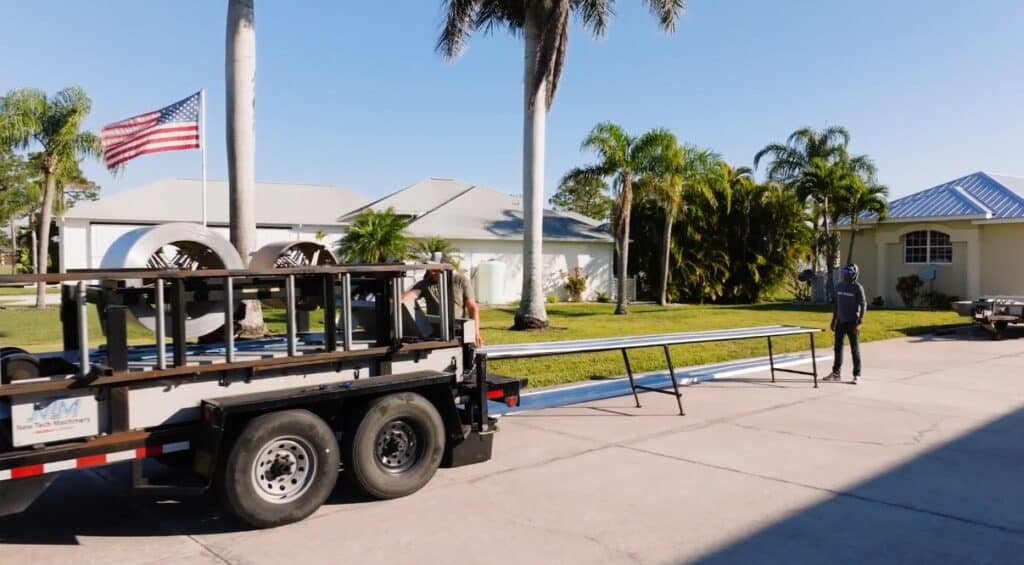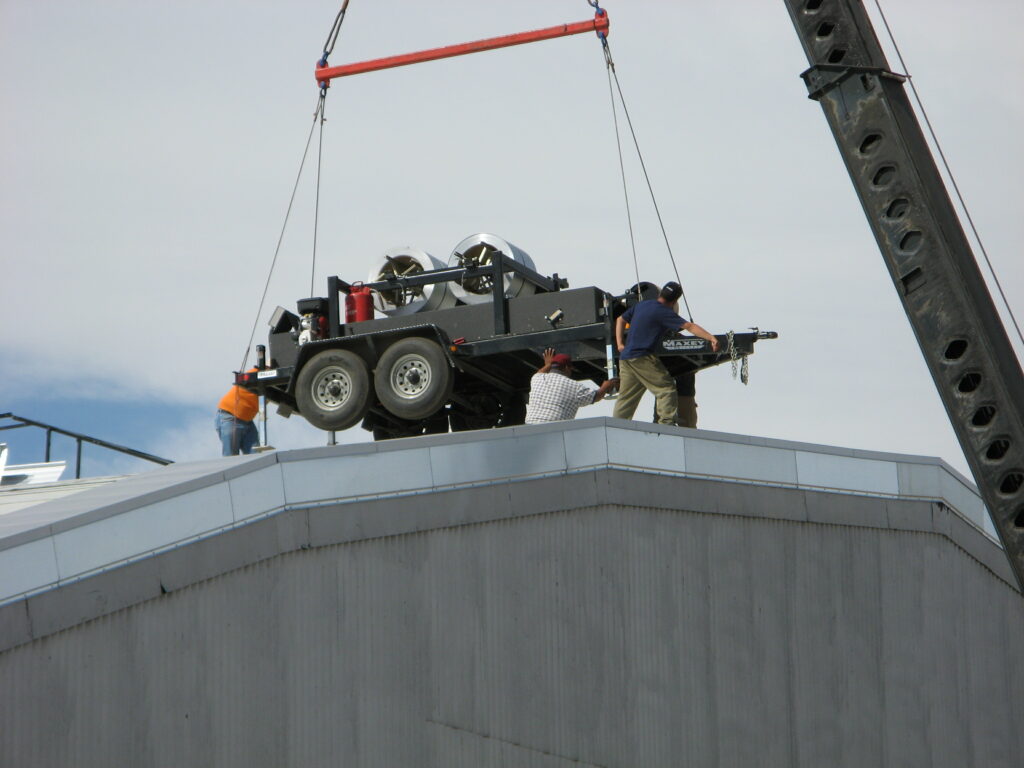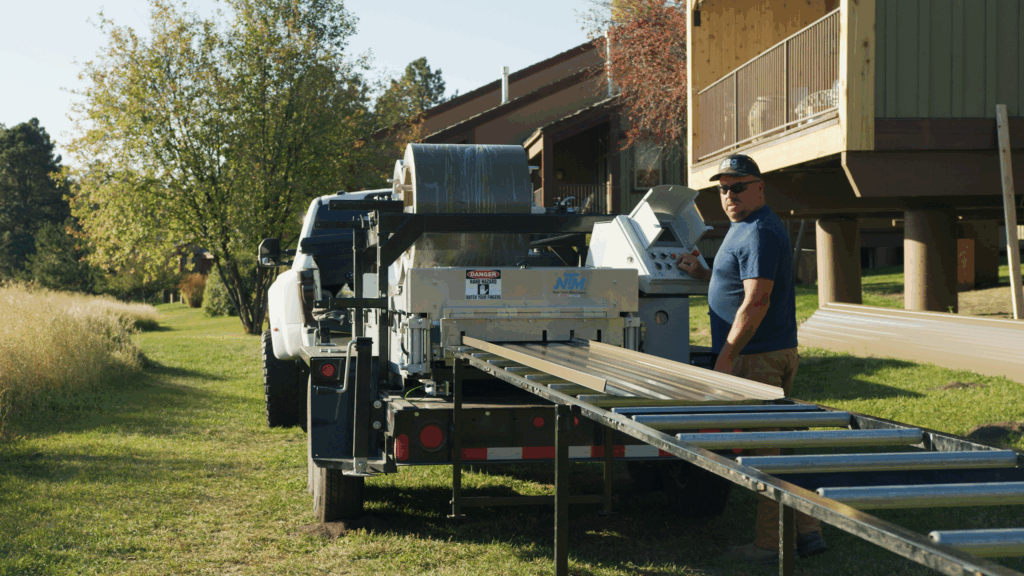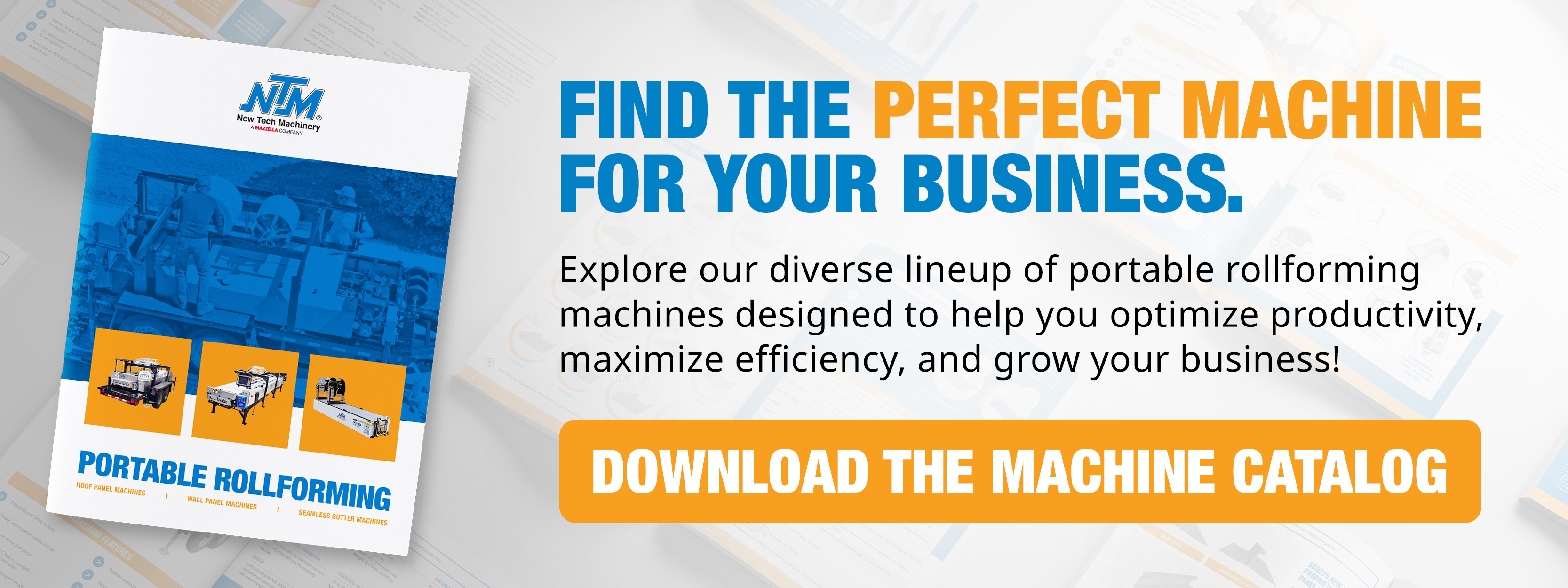Fixed vs Multi-Profile Panel Machines: A Contractor’s Guide to Making the Smart Choice
If you’re thinking about getting into on-site panel forming or upgrading your current setup, you’ve probably noticed there are two routes you can go: fixed-profile machines that make one type of panel, or multi-profile machines that can switch between different panel profiles. Both have their place in the world of metal roofing, but which one makes sense for your business?
Let’s break it down. We’ll look at what each type brings to the table, what they’ll cost you (upfront and long-term), and help you determine which option best fits your operation.

The Single-Minded Approach: Fixed-Profile Machines
Think of fixed-profile machines as the specialists of the rollforming world. Each one is built to do one thing really well – make a specific panel profile at a set width. No changeovers, very few adjustments, just consistent production of whatever profile it’s designed to run.
Englert’s been making these types of machines with their Metal Man line. Take their FP1300/16 – it runs only 1.5″ mechanical-lock panels with 16″ coverage. Plug it into any 110V outlet, flip the switch, and you’re making panels at about 40 feet per minute. Simple as that. But if you want to include 20″ coverage, you’ll have to also purchase their 1300/20 panel machine.
Why Contractors Like Fixed-Profile Machines
They’re dead simple to run. No complicated setup procedures, no hydraulic systems to maintain, no computer controllers to figure out. Your crew can learn to operate one in a morning, not a week. For smaller outfits or guys just getting started, this simplicity is gold.
The price is right – at least upfront. You’re not paying for bells and whistles you don’t need. If all your jobs use snap-lock panels, why pay for the ability to make mechanical seams? The lower entry cost makes it easier to get into rollforming without a massive capital investment.
Easy to haul around. Most fixed-profile machines weigh in around 1,500-2,000 pounds. You can pull them with a standard pickup and trailer setup, and they don’t take up half your job site when you set them up. Perfect for tight residential lots or when you need to squeeze into awkward spaces.
Reliability. Once you dial in the settings for your go-to panel, that’s it. No risk of setup errors, no wondering if you configured something wrong. It just makes the same panel, the same way, every time.
The Downside of Going Fixed
You’re locked into one profile. Period. If a customer wants a different seam height or panel style, you’re either turning down the job or buying another machine. That’s tough when you’re trying to grow your business or when market preferences shift.
Multiple machines = multiple headaches. Want to offer three different panel types? You’re looking at three machines, three trailers, three sets of maintenance schedules. The “low cost” advantage disappears pretty quickly when you start multiplying.
Speed limitations. Most fixed-profile machines run at moderate speeds because they’re built with smaller motors and manual shears. Great for smaller jobs, but they can limit your productivity if you land a big commercial project.
Basic features only. Don’t expect automated length control, powered shears, or computer-controlled batch runs. These machines keep it simple, which means more manual work for your crew.

When Fixed Makes Sense
Fixed-profile machines are perfect when you’ve found your niche and you’re sticking to it. Maybe you’re the go-to contractor for a specific standing seam system in your area, or you supply panels to other contractors who always need the same profile. High volume, consistent demand, one product – that’s where fixed-profile machines shine.
They’re also great for contractors just getting into rollforming. If most of your current work uses one panel type and budget is tight, a fixed machine gets you in the game without breaking the bank.
The Swiss Army Knife: Multi-Profile Machines
Multi-profile machines take the opposite approach—one that can make multiple panel profiles by swapping out the forming tooling. Companies like New Tech Machinery (NTM) have built their reputations on this concept.
NTM’s lineup ranges from their entry-level SSR MultiPro Jr. (handles seven standing-seam profiles) up to their flagship SSQ II MultiPro (16 roof & wall panel profiles). That’s everything from 1″ snap-lock to 1.5″ mechanical seams, plus soffit, flush wall and board & batten siding – all from one machine.
The changeover process involves swapping roller sets and adjusting dies, which takes about 45 minutes once you know what you’re doing. Not instant, but way better than owning multiple machines.

Why Multi-Profile Machines Make Sense
Versatility is the name of the game. One machine can handle residential snap-lock jobs Monday, commercial mechanical seam Tuesday, and wall panels Wednesday. As your business grows and diversifies, your machine grows with you – just buy the tooling for new profiles instead of whole new machines.
Better long-term economics. Yeah, the upfront cost is higher, but think about it: one multi-profile machine instead of three or four fixed machines. Even with the cost of additional profile tooling, you’re usually ahead financially if you need more than two profiles.
Real power and speed. Multi-profile machines typically pack more punch – bigger engines (often gas-powered), hydraulic drives, automated shears. NTM’s SSQ II runs at about 75 ft/minute, while Englert’s multi-panel machine can hit 90 ft/minute. That’s double the speed of most fixed machines.
Professional features. We’re talking computerized length controls, batch programming, automated cutting, even integrated notching systems. These features boost productivity and reduce labor costs, especially on complex jobs.
Shop and field flexibility. Many multi-profile machines can run on gas engines in the field or electric motors in the shop. This adaptability keeps your machine busy year-round and gives you options for different job requirements.
The Trade-offs You’ll Face
Higher upfront investment. No sugar-coating this one – multi-profile machines cost more. NTM’s SSQ II™ MultiPro starts around $63,000 base price, plus the cost of profile tooling and accessories, so an average range of $115k – $130k. The starter SSR™ MultiPro Jr. (starting at $41,200 and includes one profile) and mid-range SSH™ MultiPro (starting at $65,890 and includes one profile) both run seven standing seam profiles. The major difference is the SSR uses a manual shear, while the SSH uses a hydraulic shear. That’s a significant jump from a basic fixed machine, though financing options help.
Changeover downtime. Switching profiles takes time – 30 to 60 minutes, depending on your experience level. If you’re constantly switching between profiles, that downtime adds up. You need to plan your production runs accordingly.
Size and weight. These machines often weigh 3,000-4,500 lbs. with their trailers. You’ll need a truck to haul them, and they take up more space on job sites. Not a big deal for most situations, but worth considering for tight residential work.
More complexity = more maintenance. Hydraulic systems, gas engines, computerized controls – there are more things that can break. The trade-off for all those features is increased maintenance requirements and potentially higher repair costs.
Still one profile at a time. Don’t forget – even though you can make multiple profiles, you can only make one at a time. If a job needs two different profiles simultaneously, you’re still doing changeovers or need multiple machines. Also, you’ll need to buy the profiles separately, which will add to the cost.

When Multi-Profile Makes Sense
Multi-profile machines are ideal for contractors who want maximum flexibility or are planning to expand their services. If your projects vary – standing seam roofs one day, metal siding the next – a multi-profile machine is your friend.
They’re also a smart choice for forward-thinking contractors who want to future-proof their investment. Instead of being locked into one market segment, you can adapt as opportunities arise. Many successful roofing companies use multi-profile machines to serve both residential and commercial markets with one piece of equipment.
Side-by-Side: How They Stack Up
| Factor | Fixed-Profile | Multi-Profile |
| Panel Options | One profile only | Multiple profiles (7-16, depending on model) |
| Flexibility | Limited to one panel type | Highly versatile across different markets |
| Setup Time | Always ready (same profile) | 30-45 minutes to change profiles |
| Speed | ~40 ft/min typical | 60-90 ft/min on higher-end models |
| Power | Small electric motor, basic operation | Gas engine, 1-phase or 3-phase electric, automated features |
| Weight | 1,500-2,000 lbs | 3,000-4,500+ lbs |
| Initial Cost | Lower upfront investment | Higher upfront, better long-term value for multiple profiles |
| Best For | Specialists, high-volume single profile, budget-conscious startups | Diverse contractors, growth-oriented businesses, multiple market segments |
Making Your Decision: What Really Matters
Look at Your Current Work
Start with what you’re doing now. If 90% of your jobs use the same panel profile, a fixed machine might be perfect. But if you’re already turning down jobs because you can’t make the profile they want, or if you’re buying panels from someone else for certain jobs, a multi-profile machine starts looking pretty attractive.
Think About Your Goals
Where do you want your business to be in 3-5 years? If you’re planning to stay specialized in one type of roofing, a fixed machine keeps things simple. But if you want to grow into commercial work, add wall panels, or expand your service area, the versatility of a multi-profile machine becomes valuable.
Consider Your Market
What are other contractors in your area doing? What profiles are popular with local architects and builders? If there’s demand for multiple profile types and you’re the only contractor who can make them all on-site, that’s a competitive advantage worth paying for.
Budget Reality Check
Be honest about your finances. A fixed machine might get you started, but if you’ll need multiple profiles within a year or two, it might be worth stretching the budget now rather than buying multiple machines later. Many manufacturers offer financing, which can make a multi-profile machine more accessible than you think.
Operational Considerations
Think about how and where you’ll use the machine. Shop work? Job sites? Mix of both? If you’re mostly working on tight residential lots, a smaller fixed machine might be easier to manage. If you’re doing larger commercial jobs with room to set up, a multi-profile machine’s size isn’t an issue.

The Bottom Line
Both types of machines can boost productivity and increase your bottom line – it’s all about matching the tool to your needs. Fixed-profile machines are excellent for contractors who know exactly what they need and want to keep things simple. Multi-profile machines offer the flexibility to grow and adapt, which can open up new revenue streams you might not have considered.
If you’re on the fence, lean toward versatility. The roofing industry is always evolving, and having the ability to adapt to new profile demands or market opportunities is usually worth the extra investment. At NTM, we’ve built our reputation on helping contractors build and expand their operations, and our multi-profile machines stand as the gold standard of portable rollforming.
Remember, whichever route you choose, you’re taking control of your panel production instead of relying on suppliers. That means better quality control, faster job completion, and higher profits. Whether you go with a fixed machine for simplicity or a multi-profile machine for versatility, you’re making a smart investment in your business’s future.
The key is being honest about where your business is today and where you want it to be tomorrow. Choose the machine that fits both realities, and you’ll be rolling panels profitably for years to come.
For information about NTM portable rollforming machines and accessories, contact us. One of our knowledgeable account managers will be happy to assist you.


